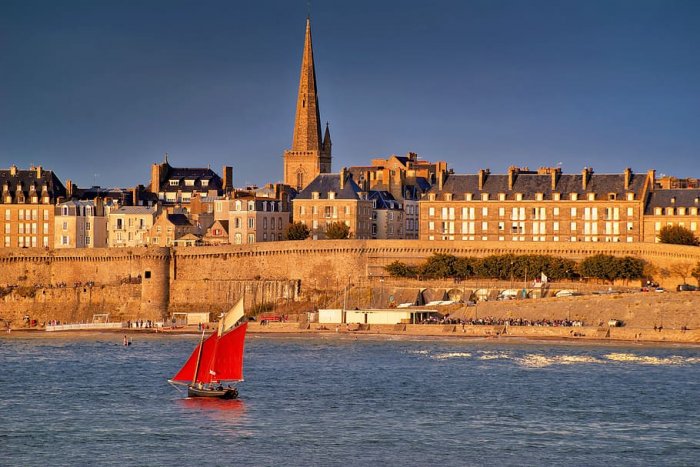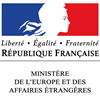Saint-Malo, the corsair city

For its inhabitants, Saint-Malo is a small country within a larger one.
The Breton port is almost a province within a province, or at least it has been granted a cer-tain autonomy in the past. A symbolic trace of this is that the flag of the city, placed on the dungeon of the castle of Saint-Malo where the town hall is located, is higher than the other flags that adorn it (the national flag, the European flag, the "Gwenn ha du", to which the Ukrainian flag has been added). A slight departure from protocol: Saint-Malo is, for its inhab-itants, a small country within a large one.
This was the feeling of Chateaubriand, who was born here and wanted to be buried here, very romantically, on a rocky spur that forms a small island at high tide, the "Grand Bé”. His tomb can be found there -a very simple granite monument facing the sea. We had to shorten this first visit to avoid being caught by the tide: six hours to spend there, with reverence for the great writer, would have been a bit long.
The mayor of Saint-Malo, Mr Gilles Lurton, then very kindly welcomed us in his town hall for a wine of honour during which there was an exchange of gifts with the ambassador of Mauritius who accompanied us: Saint-Malo is indeed paired with Port-Louis, founded by a great Malouin, Mahé de La Bourdonnais, who was governor, for the King, of the "Masca-reignes Islands", as it was called at the time, which Mauritius was part of.
The rest of the visit is best experienced in person: the city "intra-muros", practically razed to the ground in 1944 during the Liberation bombings, but rebuilt as much as possible in the same way, has kept its narrow streets where small houses and large private mansions follow each other. Of course, a stroll on the ramparts was a must, with a visit to the statues of the great privateers who made the reputation of Saint-Malo, the Duguay-Trouin and the Surcouf.
Return via Rennes where we stopped in a crêperie while waiting for the train to Paris. We took the opportunity to hear a short talk about Brittany’s special position in France, including the symbolism of the "black and white" flag (Gwenn ha du) of Brittany, which dates back to 1925 only and was inspired by the coat of arms of Rennes. It has become the primary symbol of a province that is deeply connected to its identity.
 Jacques Villemain
Jacques Villemain
Saturdays in French province


